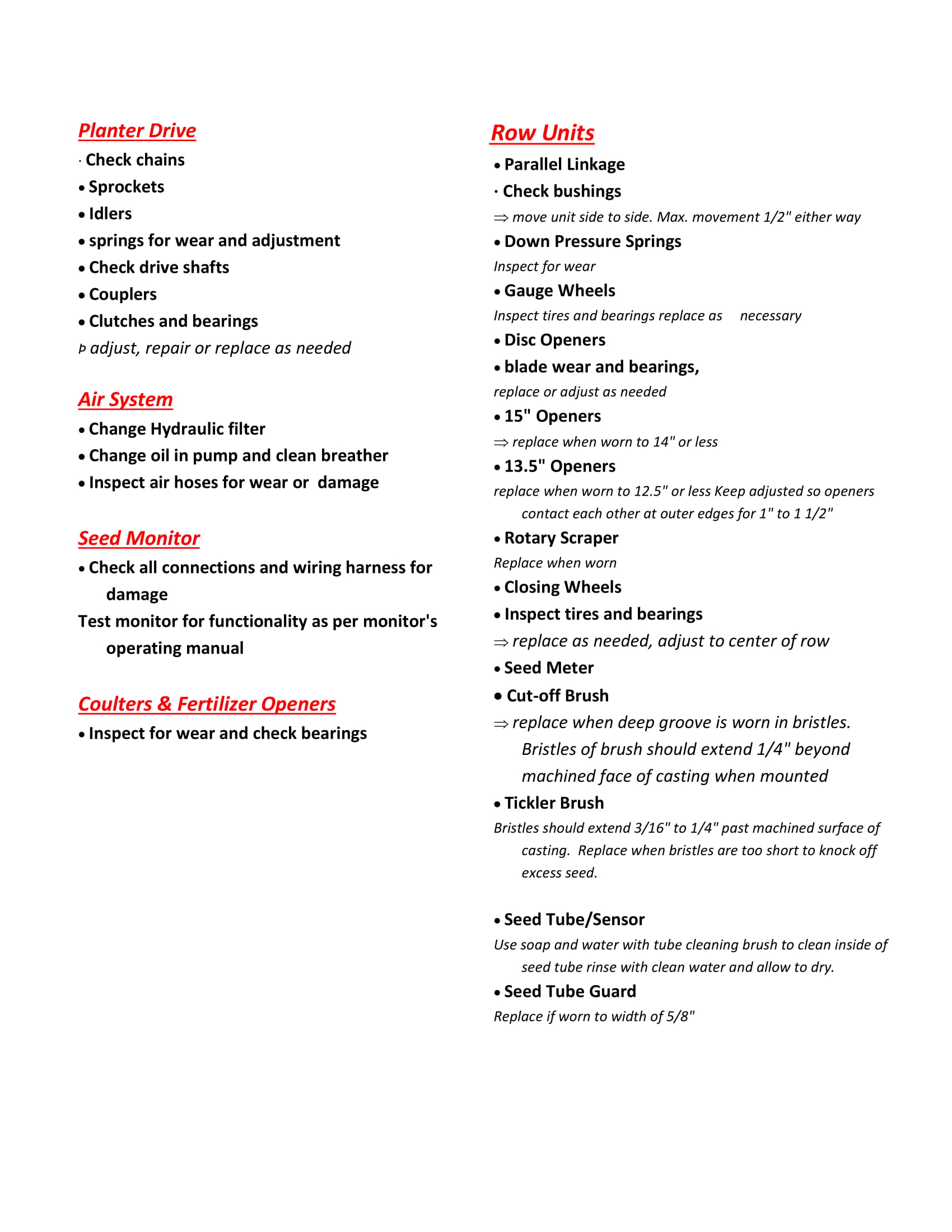Farmers should consult their owner’s manuals if they have questions
By Diego Flammini
Staff Writer
Farms.com
As weather conditions improve and producers prepare for the 2018 planting season, they are encouraged to keep planter maintenance at top of mind.
“The planter is critically important to getting a good stand and is really your first chance to make a strong impact on your yield. It pays to take time to go through the equipment with great detail to make sure it’s going to perform,” Tony McClelland, planter marketing manager with Case IH, told Farms.com today.
Following the manufacturer’s guidelines is a good place to start to ensure the planter is ready for use, McClelland said. Some items, however, may require specific observation.
Farmers should pay special attention to the row unit itself, which McClelland broke down into three parts.
“The ground engaging parts that support the row unit help get the seed at proper depth,” he said. “Farmers need to be sure the planting depth is uniform across all the row units. Even a quarter of an inch variance on seed placement can cause a plant to come up late which, at the end of the growing season, can impact yield.”
Producers should also check the seed meter to ensure efficient seed delivery.
“You’re looking for singulation,” he said. “You don’t want your planter to miss a seed or to place more than one seed at a time. Checking the hydraulic lines and seed delivery lines for cracks, leaks and wear can help the planter operate at its best.”
Farmers may also want to inspect the closing system on the planter to achieve optimal seed-to-soil contact.
“You don’t want any inconsistences in the seedbed, so make sure the closing system doesn’t have any cracks or anything that would jeopardize seed-to-soil contact or the soil density around the seed,” he said.
Steve Hosking, territory manager with Sunflower Manufacturing, provided Farms.com with a general list of items to go over on the planter before heading into the field.

Planter checklist courtesy of Steve Hosking.
He also echoed McClelland’s thoughts on consulting the owner’s manual for recommendations.